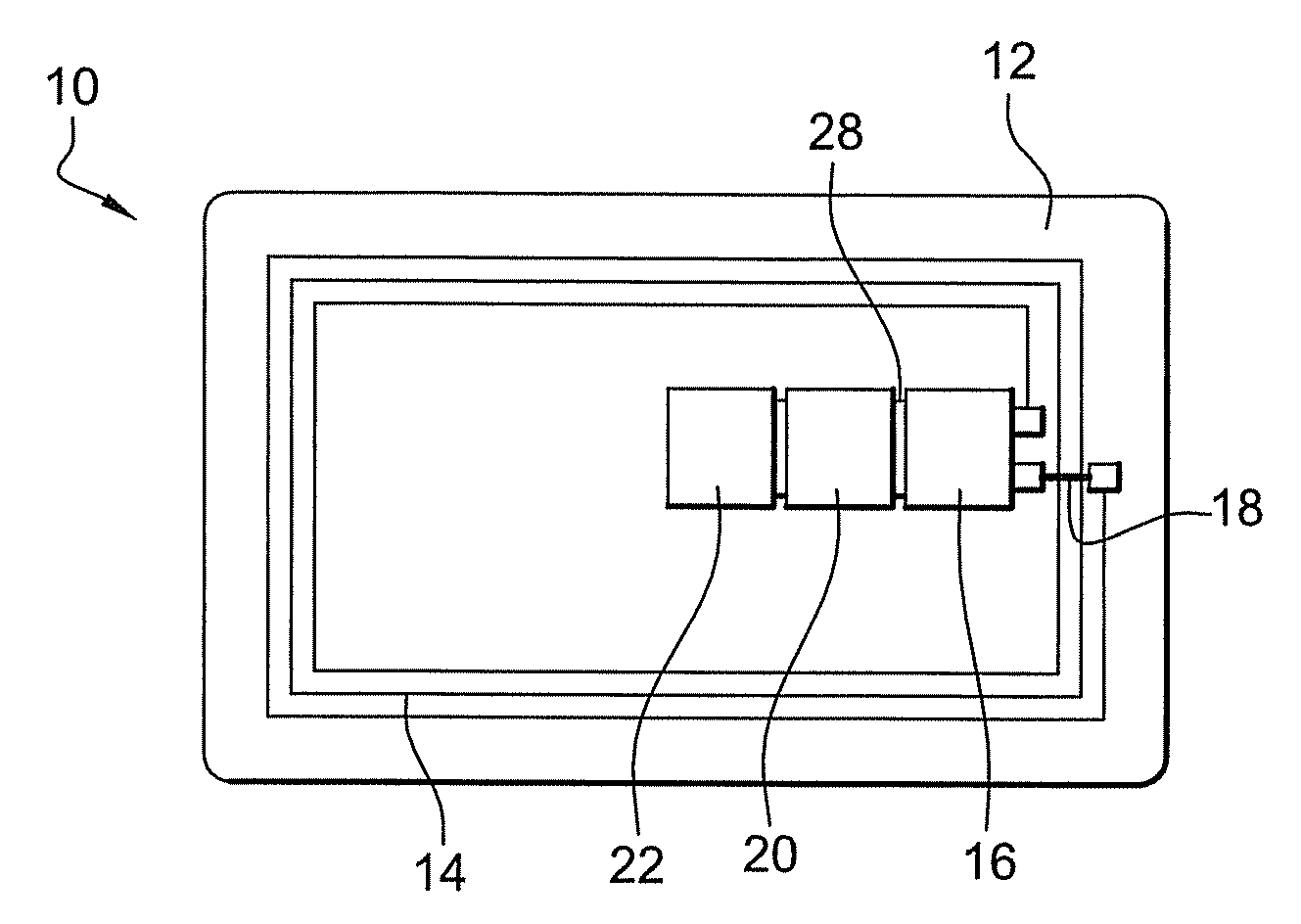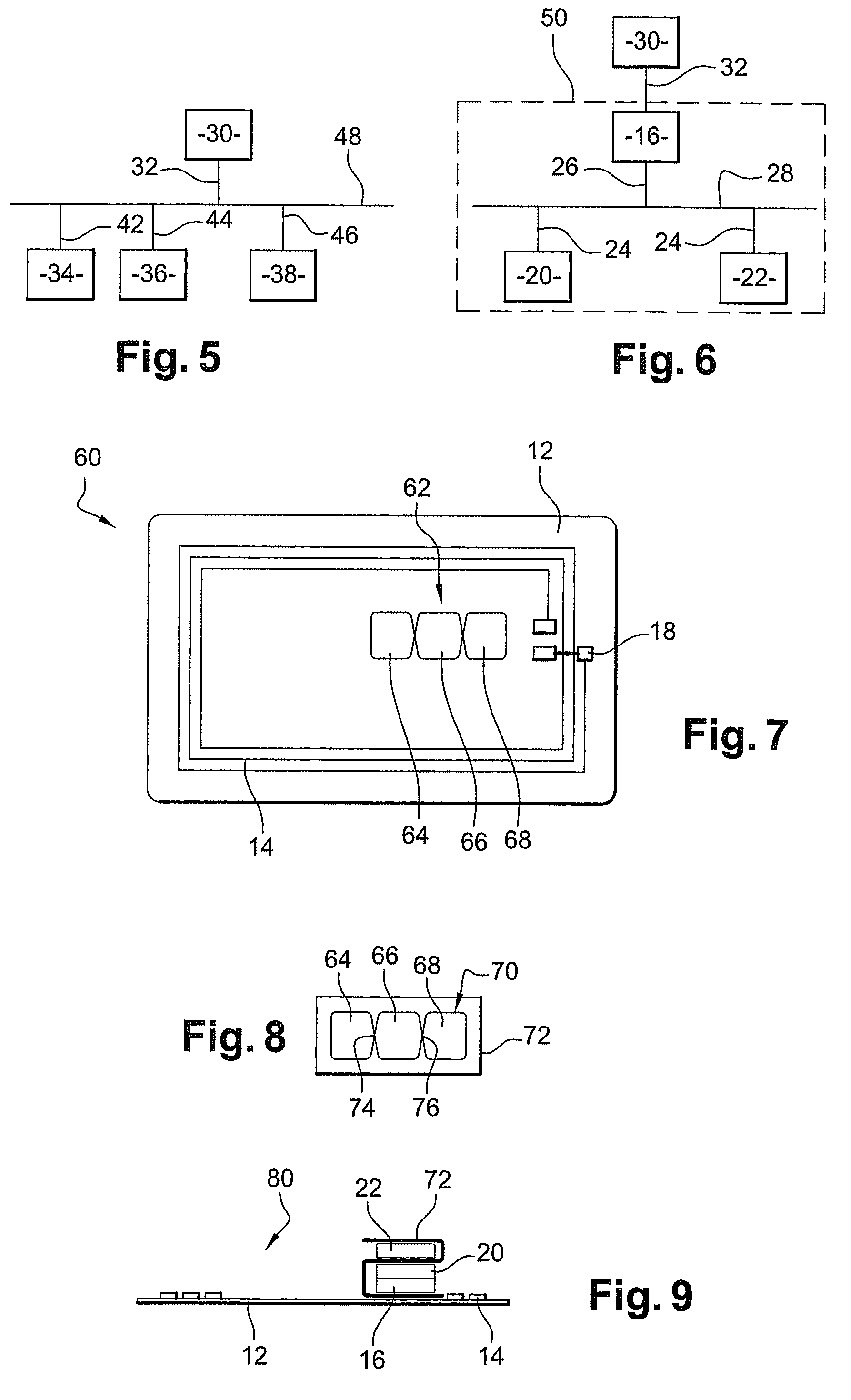Contactless communication device
a communication device and contactless technology, applied in the field of contactless integrated circuits, can solve the problems of overall dimensions, bandwidth and data collision problems, and each of them must have a bulky antenna, and achieve the effect of maximizing the confinement of magnetic fields
- Summary
- Abstract
- Description
- Claims
- Application Information
AI Technical Summary
Benefits of technology
Problems solved by technology
Method used
Image
Examples
Embodiment Construction
[0043]A multi-chip contactless card, which complies with Standard ISO 14443 for example, is shown in FIGS. 1 to 3 and referred to in its entirety as 10. Contactless card 10 comprises a rectangular substrate 12, which is made of plastic for example, on or in which there is a large antenna 14 which forms several inductive loops around the periphery of card 10. Antenna 14 is referred to subsequently as a “card” antenna.
[0044]Card 10 also comprises a chip 16 which is referred to as a “master” chip and is electrically connected to card antenna 14, realized for example by means of connections 18 realized using a “flip-chip” technique. Master chip 16 allows card 10 to communicate with its external environment by means of card antenna 14, e.g. contactless communication with a reader (not shown).
[0045]Several contactless chips 20, 22 are also provided on card 10, these chips are referred to as “slaves” because they are not electrically connected to card antenna 14.
[0046]Each of chips 16, 20,...
PUM
 Login to View More
Login to View More Abstract
Description
Claims
Application Information
 Login to View More
Login to View More - R&D
- Intellectual Property
- Life Sciences
- Materials
- Tech Scout
- Unparalleled Data Quality
- Higher Quality Content
- 60% Fewer Hallucinations
Browse by: Latest US Patents, China's latest patents, Technical Efficacy Thesaurus, Application Domain, Technology Topic, Popular Technical Reports.
© 2025 PatSnap. All rights reserved.Legal|Privacy policy|Modern Slavery Act Transparency Statement|Sitemap|About US| Contact US: help@patsnap.com



